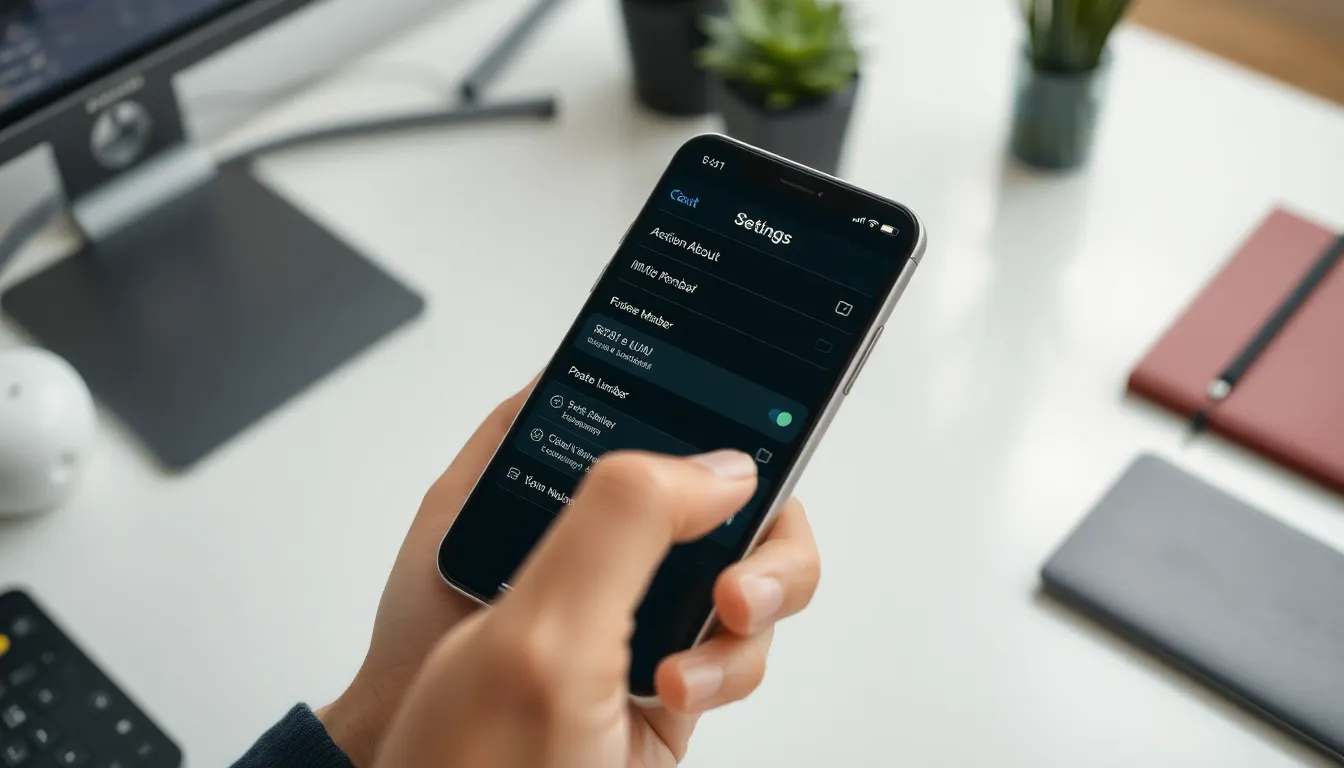In a world where technology evolves faster than a cat meme goes viral, the threat of phone cloning is no laughing matter. Imagine someone out there with a doppelgänger version of your iPhone, snooping through your texts and scrolling through your selfies. Yikes! It’s time to take action and ensure your personal data stays personal.
But don’t panic just yet! Checking if your iPhone is cloned doesn’t require a degree in computer science or a secret agent license. With a few simple steps, anyone can uncover the truth behind their device. So grab your phone and get ready to dive into the world of digital sleuthing. After all, it’s better to be safe than sorry—and who doesn’t want to keep their smartphone secrets safe from prying eyes?
Table of Contents
ToggleSigns That Your iPhone May Be Cloned
Identifying whether an iPhone is cloned can prevent potential data breaches. Watch for specific signs that may indicate unauthorized duplication.
Unusual Battery Drain
Frequent battery drainage often signals an issue. If the battery depletes faster than expected, this could stem from a cloned device accessing data in the background. Monitoring usage patterns proves essential. Checking battery health can provide insights into unusual performance. Sometimes, background apps may cause an increase in battery use, but cloning poses a significant concern.
Unexpected Data Usage
An unexpected spike in data consumption raises red flags for many users. If the data usage appears significantly higher without additional activities, a cloned phone may be the cause. Reviewing data usage in settings reveals if unknown devices are interacting with personal information. Auto-updates or background apps often don’t account for excessive data usage. It’s crucial to investigate unusual patterns promptly.
Unknown Apps Installed
Discovering apps that weren’t intentionally installed can indicate a serious problem. Unknown applications on the device may suggest that unauthorized individuals cloned the iPhone. Checking for unfamiliar apps in the App Store or settings helps identify potential security risks. App permissions often provide further insights regarding ownership and control. Vigilance in which apps are installed ensures better digital security.
How to Verify if Your iPhone is Cloned

Identifying a cloned iPhone requires attention to detail. Several methods exist for ensuring the device’s integrity.
Checking for Duplicate IMEI Numbers
Checking the IMEI number serves as a primary step. Each phone, including iPhones, has a unique IMEI code. To find this code, navigate to Settings, then select General, and tap About. If this number matches another device’s code, suspicion of cloning arises. Use online IMEI checkers to verify the number against known databases. A discrepancy in this data might indicate unauthorized duplication of the device.
Reviewing Account Activity
Thoroughly reviewing account activity reveals insights into potential cloning. Accessing account settings through iCloud helps identify logged-in devices. If any unfamiliar devices appear, they may indicate a clone is accessing personal data. Additionally, monitoring for strange login attempts or location-based access can highlight unauthorized use. An increase in failed sign-in attempts might signify an ongoing cloning attempt.
Inspecting Device Settings
Inspecting device settings provides further reassurance. Start by reviewing installed apps for anything suspicious that may not have been downloaded intentionally. Navigate to Settings, and check Privacy to see location services in use. Any unfamiliar app with access might be questionable. Similarly, check for unknown profiles under VPN & Device Management. Be vigilant if profiles appear, as they could facilitate unauthorized access to the device.
Preventive Measures Against Phone Cloning
Certain strategies exist to enhance security and protect against phone cloning. Implementing these measures significantly reduces the risk of unauthorized access to personal data.
Enabling Two-Factor Authentication
Two-factor authentication serves as an essential security layer. It requires users to provide two forms of identification to access accounts. This means even if someone obtains the password, they can’t access the account without the second factor. Popular services, like iCloud, offer this feature, making it vital for protecting sensitive information.
Keeping iOS Updated
Maintaining the latest iOS version ensures devices benefit from the latest security patches. New updates often fix vulnerabilities that could be exploited by cloning attempts. Users receive notifications when an update is available, and applying these updates promptly strengthens overall device security. Regularly checking for updates secures against emerging threats that could compromise device integrity.
Using Strong Passwords
Selecting strong, unique passwords for each account plays a significant role in digital security. A password should combine letters, numbers, and symbols to enhance strength. Avoiding easily guessable information, such as birthdays or common words, decreases the likelihood of unauthorized access. Additionally, using a password manager can help users generate and store complex passwords securely.
What to Do If Your Phone Is Cloned
If an iPhone is suspected of being cloned, immediate action is essential to protect personal information. Taking swift steps can help mitigate risks associated with potential unauthorized access.
Contacting Your Service Provider
Contacting the service provider can clarify the situation. Reporting suspicious activity allows them to monitor accounts for unusual behavior. They may assist in identifying if a clone exists by checking for duplicate IMEI numbers or unfamiliar devices linked to your account. Requesting a SIM card replacement can enhance security as well. Ensuring the provider provides clear guidelines and support is vital for addressing concerns promptly.
Resetting Your iPhone
Resetting an iPhone serves as a primary step in addressing cloning. Performing a factory reset erases all data, which includes potential unauthorized access points. Prior to resetting, users must back up essential data to prevent loss. After the reset, setting up the device as new can eliminate any lingering threats. It’s crucial to update to the latest iOS version post-reset for optimal security.
Monitoring Your Accounts
Monitoring accounts consistently helps identify unauthorized activity. Regularly checking for unknown devices linked to iCloud accounts reveals any potential breaches. Reviewing bank statements and online services for unknown transactions enhances awareness of personal data security. Quickly reporting discrepancies to financial institutions ensures protective measures can be implemented. Maintaining vigilance provides a necessary safeguard against future threats, reinforcing digital security.
Taking proactive steps to ensure the security of an iPhone is crucial in today’s digital landscape. By staying vigilant and monitoring for signs of cloning, users can protect their personal information from potential threats. Regularly checking IMEI numbers and account activity can reveal any unauthorized access, while preventive measures like two-factor authentication and strong passwords significantly enhance security.
If cloning is suspected, swift action is necessary. Contacting the service provider and possibly performing a factory reset can help safeguard personal data. Remaining aware and informed about digital security will empower users to take control of their devices and maintain their privacy.




